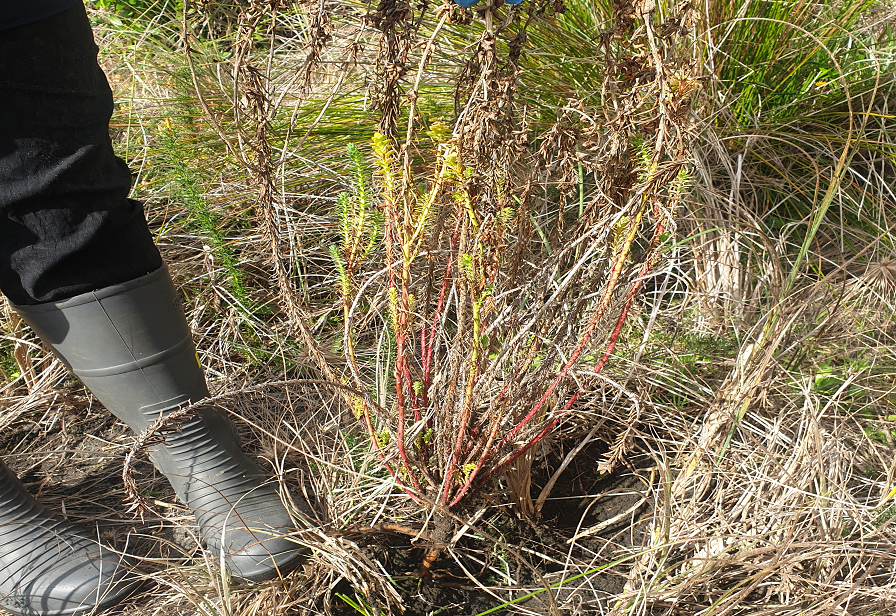Taranaki beachgoers are asked to keep their eyes peeled for the invasive plant sea spurge this summer, after it was discovered among sand dunes at Ōakura Beach.

It’s the first-time sea spurge has been found in Taranaki, although a single plant was discovered in Mōkau in 2019.
Sea spurge invades the shores just above the high tide mark and can pose a threat to plants and birds that are native to New Zealand’s dunes. It can also cause skin and eye irritation for humans and other animals. First spotted in New Zealand in 2012, it’s believed the seeds travel on ocean currents from Australia.
Taranaki Regional Council Environment Services Manager Steve Ellis says a single plant was recently identified at Ōakura Beach.
It was removed by the Council, which has been working closely with Biosecurity New Zealand (the Biosecurity arm of the Ministry for Primary Industries) and the Department of Conservation to identify and control any potential spread.
“Council officers inspected the site, and Biosecurity New Zealand is planning an extensive survey of the coast 15km north and south from where the original plant was spotted,” says Mr Ellis.
“While no further plants have yet been found, we know this weed spreads quickly and could cause significant damage if it became established. So, we’re asking beach users in Ōakura and along the coast to keep an eye out and report any possible sightings.”
Sea spurge (Euphorbia paralias) looks like a small shrub and can grow up to about half a metre in height. It has multiple stems that are often reddish at the base with slender, tightly packed bluey-green leaves and greenish flowers on the end of the stems.
Sea spurge sap can cause skin and eye irritation, and there is a native plant species that looks very similar, so people should not try and remove it.
Instead, they should take a photo of the location and a close-up of the plant, note its exact location, and then call Biosecurity New Zealand’s pest and disease hotline on 0800 80 99 66.
Biosecurity New Zealand and the Council will monitor the site over the coming months and years to ensure any further spread is detected and controlled.
For more information see www.trc.govt.nz/shore-spurge-and-sea-spurge/#sea(external link).